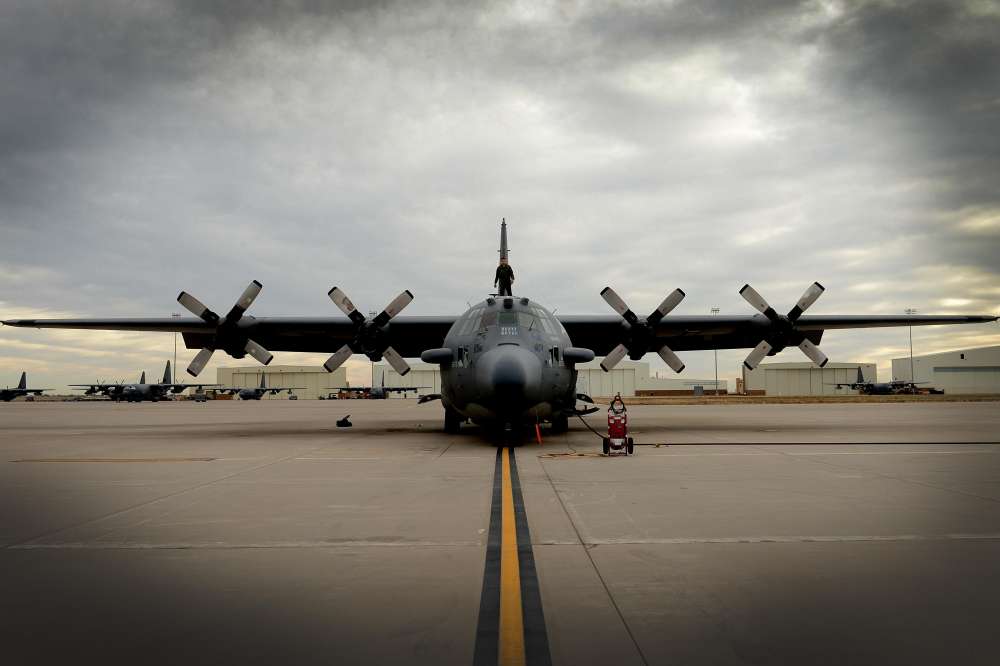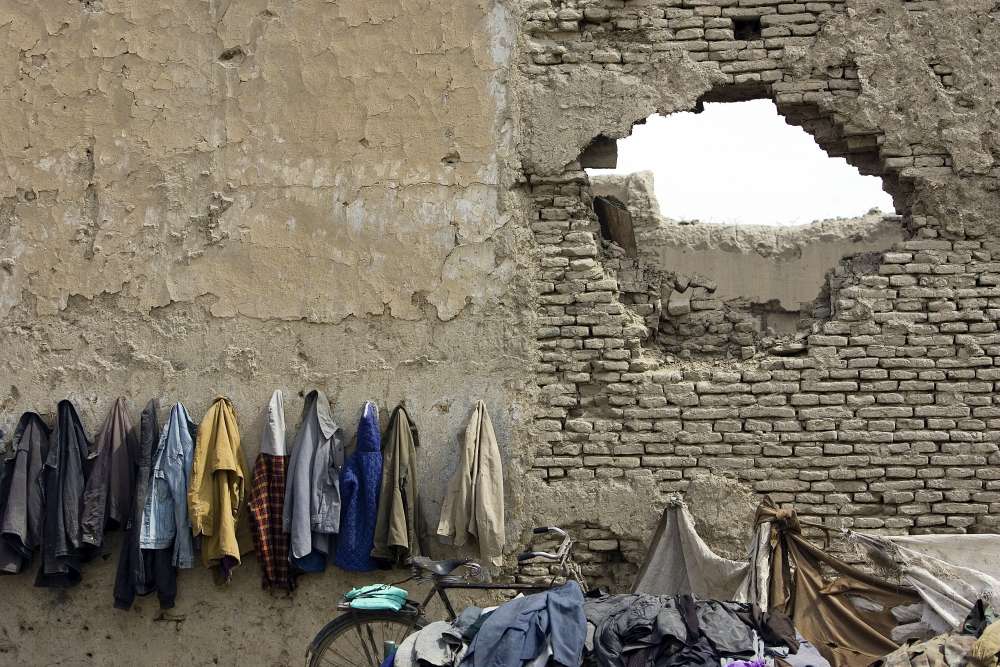Soldier Self-Defense and the Strikes in Syria

On Tuesday, U.S. forces shot down an armed Iranian drone in southern Syria, a few days after a similarly justified strike on a Syrian aircraft that dropped a bomb near a U.S. training outpost. Combined with the U.S. decision to ramp up support to Syrian Kurds seeking to retake Raqqa, these actions could be interpreted as initial steps on the road to war with Syria. But in my view the better interpretation is that recent events are more simply construed as exercises of unit self-defense.
As I argued in a Lawfare post last year, it has long been a strong possibility (if not probability) that self-defense would be used to justify significant strikes on behalf of U.S. forces in Iraq and their partners in Iraq and Syria — and what we’re looking at now is a manifestation of this. In a recent article in the Harvard National Security Journal (HNSJ), I outline how changing patterns in warfare have expanded reliance on soldiers’ individual and unit self-defense doctrine and argue that the way this is being used in practice merits reconsidering how we think about this self-defense right. The United States’ latest actions in Syria are an example of how an expansive interpretation of this concept can lower barriers on use of force and can also potentially undermine domestic restrictions on engaging in armed conflict.
What Is Unit Self-Defense?
Soldiers are recognized to have a right to defend themselves or their unit against imminent threats wherever they are located. This is known as the right to individual or unit self-defense (hereinafter referred to as soldier self-defense to distinguish it from the broader concept of the sovereign right to self-defense). Self-defense is supposed to be a limited carve-out, one that allows soldiers to protect themselves against immediate threats, regardless of other tactical limitations on their use of force. However, as I argue in the HNSJ article and a forthcoming empirical study (coming next week here), the use of self-defense has expanded in modern conflicts in response to a greater prevalence of asymmetric threats and insurgent tactics.
There are different views about the origin of this right — the U.S. grounds it in the sovereign right of self-defense, while other countries have based it on their domestic criminal law self-defense provisions or in customary law — but soldiers’ right to self-defense is universally recognized. Although there is very little settled law or official policy surrounding this right, I suggest in my HNSJ article that current state practice appears to treat soldier self-defense as a separate body of law and authorization for use of force, distinct from IHL (see here at 304 – 305).
The U.S. subscribes to one of the most expansive existing interpretations of sovereign and soldier self-defense. It considers soldier self-defense rights to be inherent and available to U.S. forces wherever they are, in peacetime or in wartime. The U.S. also liberally interprets “imminence” with respect to soldier self-defense: under the definition of self-defense in the U.S. standing rules of engagement (U.S. SROEs), “[i]mminent does not necessarily mean immediate or instantaneous.” This means that the self-defense right can extend to cover threats that would not materialize for quite some time, potentially even weeks. In addition, because this right is available to both units and individuals, it permits U.S. forces or aerial assets to act in defense of partners or associated forces in their area of operations (where designated in the ROEs).
Expansive Self-Defense Rights and Strikes Beyond a Hot Battlefield
As I argued at Lawfare last year, this expansive view of soldier self-defense could lead to it being used to justify significant strikes away from a hot battlefield or a declared U.S. engagement in conflict, undermining both international and U.S. domestic controls on warfare. At the time of writing, in March 2016, U.S. forces in Somalia had just struck a training camp of Shabab militants, killing 150 fighters. At the time, the strike appeared to go beyond the AUMF in that it targeted individuals not yet deemed to be part of Al Qaeda (the U.S. has since deemed the Shabab part of the war against al-Qaeda and therefore covered by the AUMF). And I argued then that the strike need not represent an expansion of the AUMF because it could have constituted, and appeared to have been justified under, unit self-defense. It is not a clear point of settled law, due primarily to the lack of consideration of this self-defense right, but authorizing soldier self-defense plausibly falls within the president’s Article II powers as commander in chief.
Subsequent reporting by the New York Times appears to confirm that the strike was justified as a tactical response in unit self-defense and that this has been used to justify other strikes beyond a hot battlefield: “Over the past year, the military has routinely invoked a built-in exception to those rules for airstrikes taken in ‘self-defense,’ which can include strikes to help foreign partners even when Americans are not at direct risk.” Other Times reporting also documented this practice in other parts of the U.S. “Shadow War” in Africa.
Self-Defense and the Syria Strikes
The downing of the Iranian drone in Syria appears to be the latest example of this expansive self-defense authority. The definition of soldier self-defense under the U.S. SROEs states, “Unit commanders always retain the inherent right and obligation to exercise unit self-defense in response to a hostile act or demonstrated hostile intent” (emphasis added). So it is significant that Pentagon spokesman Captain Jeff Davis justified firing on the Iranian drone by saying: “We have said before that demonstrated hostile intent and actions of pro-regime forces towards coalition partner forces in Syria that are conducting legitimate counter-ISIS operations in Syria, will not be tolerated” (emphasis added). With this language, he is sending a fairly loud signal that this strike is justified by a unit or individual self-defense authority. The circumstances surrounding the strike reinforce this interpretation. The Guardian reported that the armed drone was approaching a U.S. outpost “where US advisors were training an anti-Isis local militia” when a determination was made to shoot it down. As will be documented in my forthcoming empirical study, this type of scenario follows a common pattern among self-defense and hostile intent determinations in Afghanistan.
The U.S. also appears to have applied a self-defense rationale to the downing of the Syrian aircraft earlier this week. U.S. Central Command issued a statement that the plane was shot down in “collective self-defense.” The term “collective self-defense” may on first glance be confusing in this context because most of the rest of the world associates “collective self-defense” with NATO Article 5. It would be alarming if the U.S. was calling this an act of aggression sufficient to trigger its right to collective self-defense under Article 5, given that the last time NATO collective self-defense was triggered, it led to the decapitation of the Afghan Taliban government and 16 years (and counting) of fighting in Afghanistan. I suggest that the U.S. was instead using the term “collective self-defense” to refer to a subset of its (soldier) self-defense rights. The U.S. SROEs frame self-defense as a spectrum that includes individual military members’ right to defend themselves, military units’ right to defend themselves (as defined by their commander), and acts in “collective self-defense of designated non‑U.S. citizens, forces, property and interests” (see pg. 83 in the SROE). (As noted above, the U.S. considers all of these acts to flow from the sovereign right of self-defense, so acts in national self-defense are also part of the same spectrum and SROE section).
Reconsidering Self-Defense
The good news is that this interpretation suggests that the U.S. is making a somewhat more limited claim in the Syria conflict and is not contending that Syrian or Iranian actions constitute acts of aggression (in a jus ad bellum sense) or expressing any more interest in engaging in an armed conflict there than it has in the past. The bad news is that in making this limited claim, the U.S. is essentially confirming that a couple of the fundamental restrictions on significant uses of force (either typical jus ad bellum thresholds or domestic war powers constraints) are not considered applicable in the increasingly wide swath of situations covered by soldier self-defense.
Although the use of this force in Syria is of critical concern, the problem goes beyond the immediate Syria context. As I argue in my forthcoming study, “The principles and restrictions created under the jus ad bellum paradigm were established due to larger concerns about limiting a state’s resort to force within the international system. If the threshold of when states may resort to force jus ad bellum is now whenever an individual soldier wherever deployed faces an imminent — and not immediate — threat, then it may significantly weaken the overall prohibition on states’ resorting to force,” not to mention domestic restrictions on the president’s war-making authority.
There is no simple fix to this. For while the current expansive U.S. interpretation presents serious risks of eroding controls on force and displacing or weakening IHL accountability, there are also legitimate reasons that reliance on self-defense has expanded in modern conflict. The empirical evidence suggests that where the self-defense right is construed too narrowly, it can significantly limit soldiers’ ability to respond to the full range of threat scenarios in modern asymmetric conflict, undermining their ability to both protect themselves and carry out their mission.
What we need now is greater recognition of the way this self-defense concept (and the frequently associated “hostile intent” concept) is being used in modern conflict and more advanced discussion among legal scholars and practitioners about how this emerging practice affects both civilian and combatant interests in conflict. A major challenge in trying to address the different protection and use of force concerns that have already arisen is the ambiguity in standards and lack of settled law. I have previously argued that reconceptualizing this right as part of the combatant privilege would address some of the issues that have manifested in state practice from overly expansive and overly narrow interpretations grounded in other doctrines. At a minimum, greater attention to this emerging practice might help to clarify some of the elements and fault lines, from states’ interpretations of the origin of this right to how standards imported from other bodies of law (like sovereign self-defense or criminal law) apply in a soldier self-defense situation.
The reliance on soldier self-defense is not going to go away any time soon. Full consideration of its significance and limitations might prevent confusion and the blurring of boundaries in situations like the recent Syria strikes.
This commentary was originally published by the Lawfare Blog on June 22, 2017.







